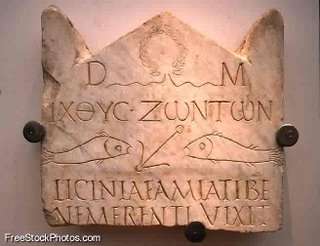 As I mentioned in my last post, I recently completed the Cross-Cultural Hermeneutics course at Salt Lake Theological Seminary, and in our last session one of the topics we discussed was symbolic anthropology, specifically the work of Victor Turner. I had read some of Turner previously, and read other anthropological commentary on his perspectives, while completing my work on a project for this course, and I immediately recognized the implications of symbolic anthropology for not only my project, but for evangelical engagement with LDS culture as well.
As I mentioned in my last post, I recently completed the Cross-Cultural Hermeneutics course at Salt Lake Theological Seminary, and in our last session one of the topics we discussed was symbolic anthropology, specifically the work of Victor Turner. I had read some of Turner previously, and read other anthropological commentary on his perspectives, while completing my work on a project for this course, and I immediately recognized the implications of symbolic anthropology for not only my project, but for evangelical engagement with LDS culture as well.In this post I will briefly summarize some of the thinking from Turner's symbolic anthropology (at the risk of oversimplification), and will then apply it to a clash of symbols in popular culture, and will conclude with consideration of the ramifications of all of this for ministry among the religions. I beg the reader's patience with the initial academic discussion of anthropology.
Symbolic anthropology, especially as presented via the work of Victor Turner, understands culture as composed of symbols which sustain society. Turner's work obviously includes both a methodology of studying the symbols as well as a theory of the symbol. In terms of theory, every culture may be thought of as made up of both signs and symbols. Signs (also called referential symbols) have a one-to-one relation between the signifier and the signified and the connection between the two is arbitrary. The meaning is referential. We master our world by signs.
Symbols, on the other hand (also called condensation symbols) fuse affect and value. That is, they have both affective and moral poles associated with them. Primacy is on feeling and willing, not on referential thought. Because of this emphasis on the affective, symbols have mobilization efficacy. If it is said that we master our world by signs, then we master ourselves by symbols.
We might also note that given the strong connection of the affective or feeling to symbols, individuals and cultures often attach a strong sense of individual and corporate identity to them. The significance of symbols to a culture, the importance of the deep affective dimension of symbols, and how this plays out in cross-cultural interaction, can be illustrated through an example from popular culture.

It is not possible to drive along America's roadways for long without encountering the Christian fish symbol on car bumpers. The fish has long been a historic symbol of the Christian faith stretching back to the early centuries of the religion. As an expression of their identification with Christ and their faith, contemporary Christians created various expressions of this ancient symbol and proudly displayed them on their car bumpers. However, it did not take long for another American subculture, atheism and agnosticism, to recognize the significance of the fish symbol for the Christian community, and they responded with a modification of the symbol. The addition of "Darwin" and feet to the symbol provide an evolutionary twist that is included as a means of both establishing atheist cultural identity while also mocking both Christianity and individual Christians through the use of symbol.

Not surprisingly, when the conservative Christian community noticed that their symbolism was being appropriated and mocked, this did not lead to their interest in exploring the secular worldview and the rejection of Christianity. Instead, Christians responded with a further modification of the symbolism wherein the Christian fish was depicted as carnivorous and devouring the atheist evolving fish symbol. In this development of the symbolism, Christians responded defensively to the attack on their symbol, which was interpreted as an attack on the essence of the sacred in their culture, Christ himself, as well as Christianity and individual Christians.
There are at least a few things we might take away from a consideration of symbols and their place in culture, as well as the popular culture example of symbol wars.
1. Symbols are significant to a culture as an embodiment of the sacred or the highly valued.
2. Individual and community identity is attached to symbols and their expression.
3. The manipulation of symbols by cultural others leads to perceptions of threat to individual and community identity, and attack on the culture.
4. A defensive reaction may follow from attack on cultural symbols.
Given the strong connection between a culture, identity, and the affective and symbolism, it is not surprising to expect a negative reaction when a given culture perceives that its symbolism is being attacked by a cultural other. For this reason missionaries would be ill advised to engage Hindus during their life-cycle initiations (samskaras) pilgrimage, or Muslims during the hajj. The presence of cultural outsiders at places associated with a symbolic sense of the sacred would provoke a strong negative reaction by the culture, thus alienating the missionary from the participants of the culture making effective communication difficult if not impossible. The insights of symbolic anthropology in dialogue with missiology teaches us that there are appropriate and inappropriate cultural venues in which to engage those we are called to reach.
With these considerations in mind we might this discussion a little more close to home. Scholars have noted several aspects of Mormon culture, including its emphasis on ritual, the significance of death and death conquest, as well as pilgrimage. While we might not normally think of Mormon participation in community celebrations (such as Pioneer Day), pageants (such as the Mormon Miracle Pageant at Manti), and temple visits as pilgrimage, Douglas Davies has stated that, "Mormon spirituality cannot be interpreted without some idiom of pilgrimage" and that "the Mormon practice of temple visiting" is legitimately understood as an aspect of pilgrimage.
Other aspects of Mormon culture are worth considering, including the connection between Mormon identity and ideology of place connected to sacred geography, temples serving as a social symbol, and pilgrimage as a social context where Mormons participate in a narrative rehearsal of the collective sacred.
If we connect the dots of our discussion, including the significance of symbols to culture, and the defensive reaction of a culture when its symbolism is attacked (or the mere perception of threat exists), we might reflect once again as to whether outreach at Mormon temples is culturally appropriate. In light of the preceding discussion the answer must be a resounding "no." Just as evangelicals were not motivated to consider a secular worldview when one of its sacred symbols was attacked, but instead reacted defensively, Mormons are not motivated to consider a traditional Christian worldview when their cultural symbol is attacked by the presence of evangelicals as cultural outsiders. I submit that while evangelicals have the best intentions in their outreach programs at various expressions of Mormon pilgrimage, and worthy goals of education and evangelism, ignoring the symbolism of Mormon culture results in not only a widening of the divide between our subcultures, but also deepens their commitment to their worldview in response to perceptions of attack. While evangelicals may disagree with this assessment, they will have to carefully consider symbolic anthropology and its ramifications for ministry before immediately dismissing this thesis.
No comments:
Post a Comment